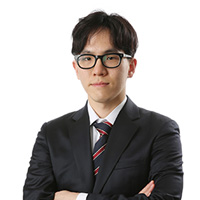Architecture biennale to draw up master plan to restore Seoul's urban green spaces
By Shim Woo-hyunPublished : Nov. 8, 2022 - 16:24

The Seoul Biennale of Architecture and Urbanism 2023 will invite experts from Korea and abroad to discuss a master plan for restoring urban green spaces in the country’s capital city, the Seoul city government said Tuesday.
At the Seoul Hall of Urbanism and Architecture, the Seoul city government on Monday held a pre-biennale under the title of “Land Architecture, Land Urbanism: City of Mountain Ranges, Waterways, and Wind Breezes -- Drawing of the Seoul’s Next 100 years.”
The 2023 architecture biennale -- the fourth edition since it was first established in 2017 -- will be housed at the Songhyeon Green Plaza, an open space located in Songhyeon-dong, Jongno-gu, Seoul. It will run from Sept. 1 to Oct. 29, 2023.
“We intend to present a blueprint of Seoul City that links the past with the present and future," Seoul Mayor Oh Se-hoon said in a statement.
Kang Byoung-keun, Seoul’s fourth city architect and the biennale’s operation director, said that the upcoming biennale “will become a place where we seek wisdom from people around the globe to restore and reconnect forests and waterways and vitalize the city.”
Kang also expressed hopes that next year’s biennale can initiate discussions that will become the groundwork for actual changes in the next century.
For next year’s biennale, a total of 40 artists and artist groups from 21 countries will visit South Korea. Leading the overall biennale is architect Cho Byoung-soo. Participating curators also include architect Chun Eui-young, architectural journalist Lim Jin-young, architect Youm Sang-hoon, architect Kim Sara and professor Leif Hogfeldt Hansen.
SBAU 2023 General Director Cho said the biennale will mark Seoul as a research subject and invite experts from around the world to engage in discussions about the city.
Cho said the upcoming biennale will aim to come up with possible ways that can restore the city, which he deemed as having been damaged and disconnected during extensive urban development processes over the past decades.
According to Cho, Seoul was initially developed with careful consideration of the natural environment that surrounds the city. However, the city become fragmented after rapid urbanization.
“If you look at the map from the Joseon era, you can see how much our ancestors were interested in the natural environment, particularly in the ways the city is harmonized with the surrounding mountain paths and waterways. The biennale will consider measures that can restore the now-damaged city which was once environment friendly,” Cho said.
Some of the projects that will be introduced at the biennale include a blueprint for changing the Gangbyeon Expressway and Olympic Highway into underground highways. The space above ground would be turned into green spaces that connect residential areas with the Han River and nearby walkways, according to Cho.
The biennale itself will aim to be an eco-friendly event, using 100 percent recyclable materials for temporary installations at the Songhyeon Green Plaza, Cho said.




![[Today’s K-pop] Blackpink’s Jennie, Lisa invited to Coachella as solo acts](http://res.heraldm.com/phpwas/restmb_idxmake.php?idx=644&simg=/content/image/2024/11/21/20241121050099_0.jpg&u=20241121172748)













